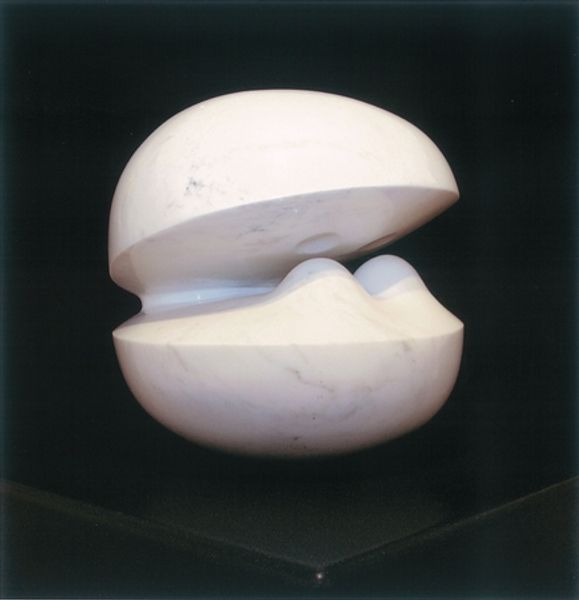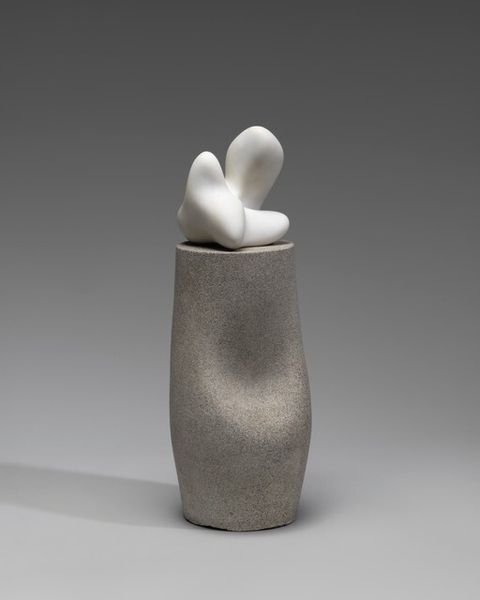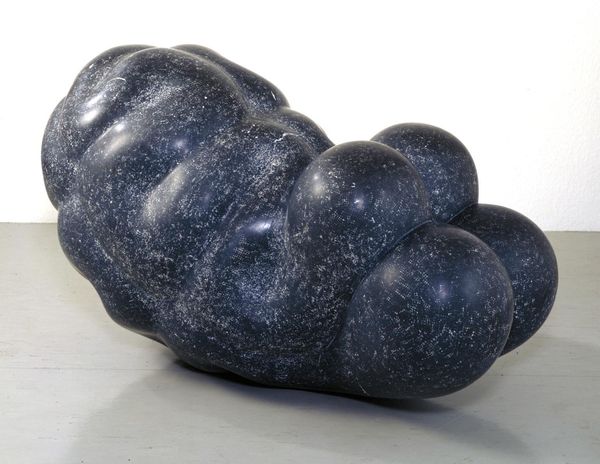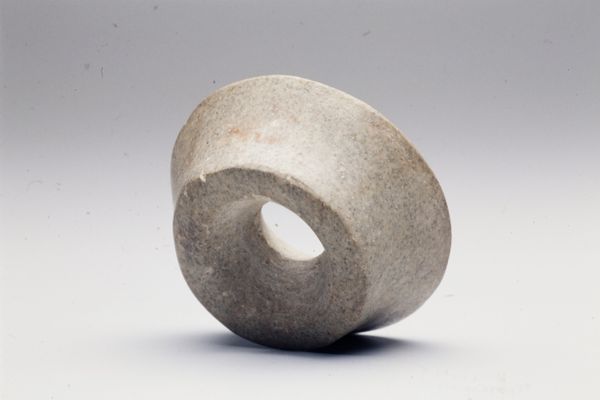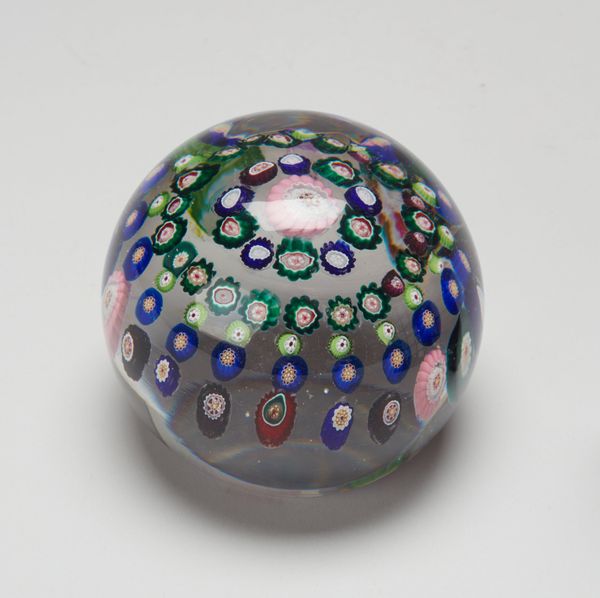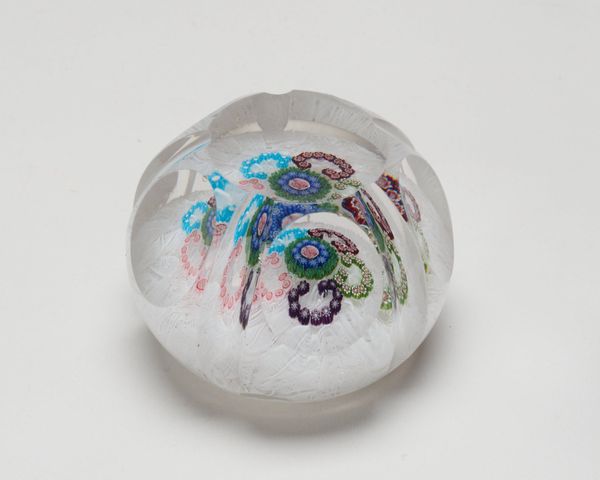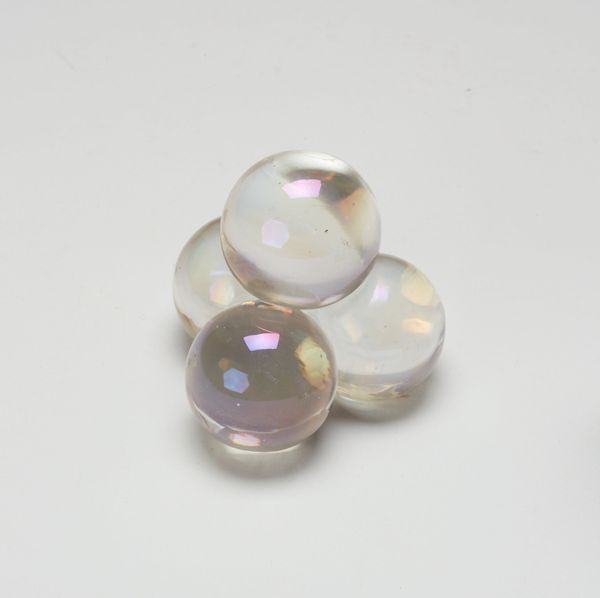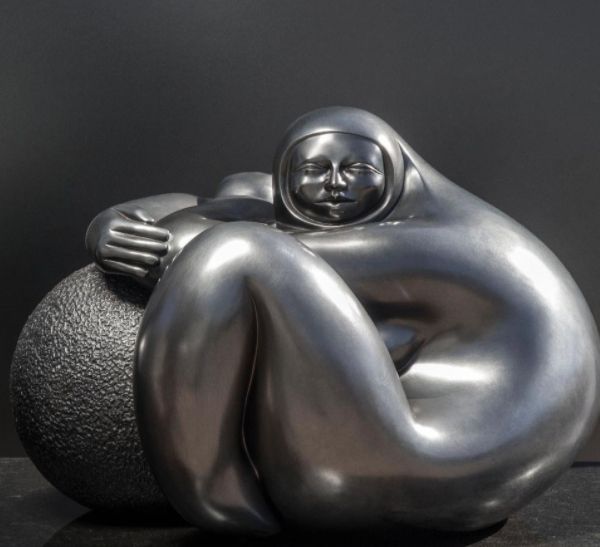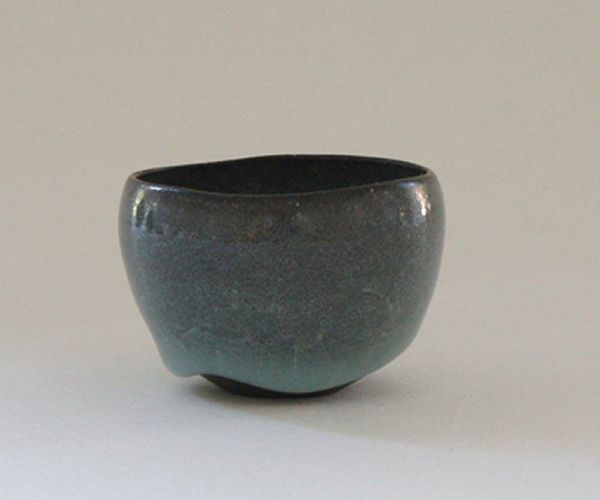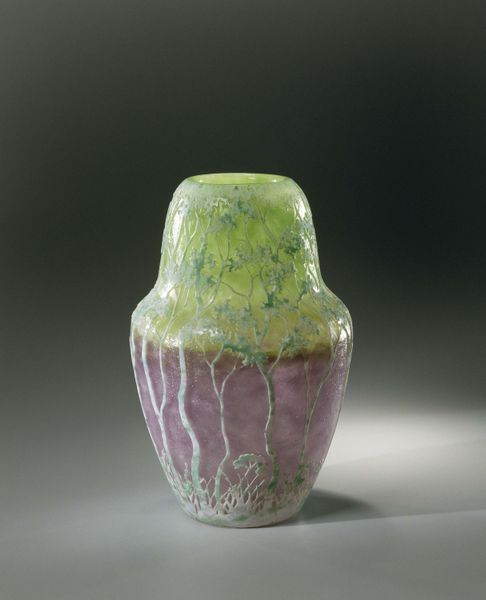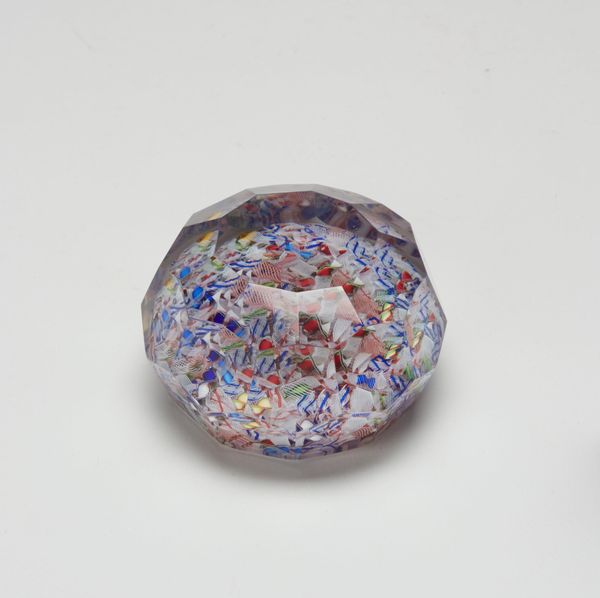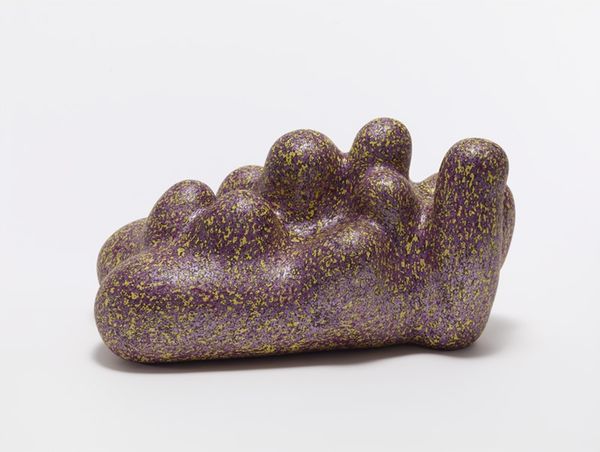
Dimensions: object: 622 x 609 x 609 mm
Copyright: © The estate of Barry Flanagan, courtesy Plubronze Ltd | CC-BY-NC-ND 4.0 DEED, Photo: Tate
Editor: This is Barry Flanagan’s "Carving No. 2," a stone sculpture from around the late 20th century. It feels playful, with these stacked, almost cartoonish, shapes. What do you see in this piece? Curator: I'm drawn to how Flanagan challenges the traditional idea of monumental sculpture. Instead of bronze or marble, he uses everyday stone, playing with form and gravity in a way that subverts expectations. Where do you think it might fit within the art world's view of sculpture at the time? Editor: Perhaps as a rejection of the serious, imposing sculptures of the past? A way to make art more accessible and less...intimidating? Curator: Exactly! It reflects a broader shift in the art world towards democratization and the embrace of the everyday. It redefines sculpture and the gallery space, doesn't it? Editor: I hadn't thought about it that way, viewing it in terms of societal shifts in art. Thanks! Curator: My pleasure! It’s all about understanding the conversation the artist is having with their time.
Comments
Join the conversation
Join millions of artists and users on Artera today and experience the ultimate creative platform.
tate 6 months ago
⋮
This consists of four separate elements. It is part of the same series of carved works as 'Carving No. 13' also displayed here. The organic tongue-like shape is a scaled-up version of a small model made by the artist by rolling a cone of clay in his hands. This was then interpreted in marble by a craftsman working with the artist at Pietrasanta near Pisa in Italy, where there are many marble carving studios. Flanagan has compared the marble carvers to musicians interpreting a score. The disc supporting the abstract shape is based on the cap of a staddle stone, traditionally used to prevent rats attacking hay ricks. The three marble balls are based on cannon balls. Gallery label, August 2004
